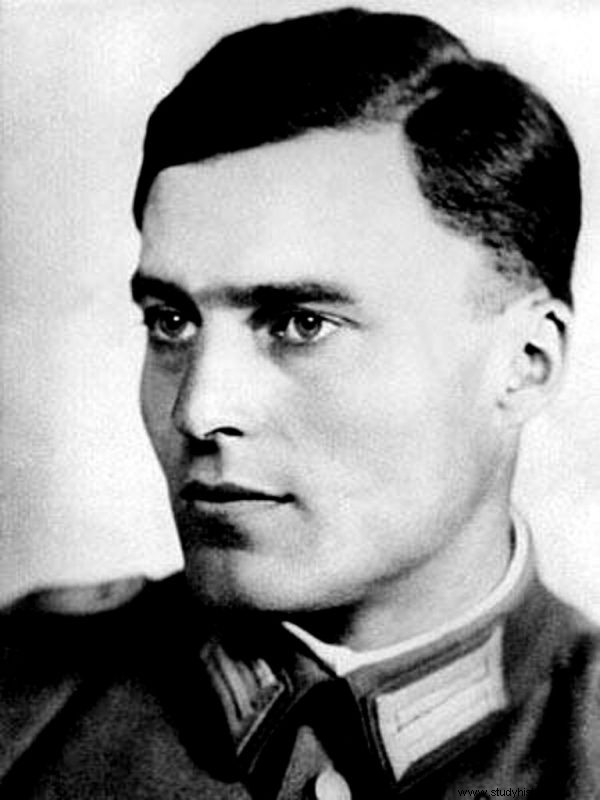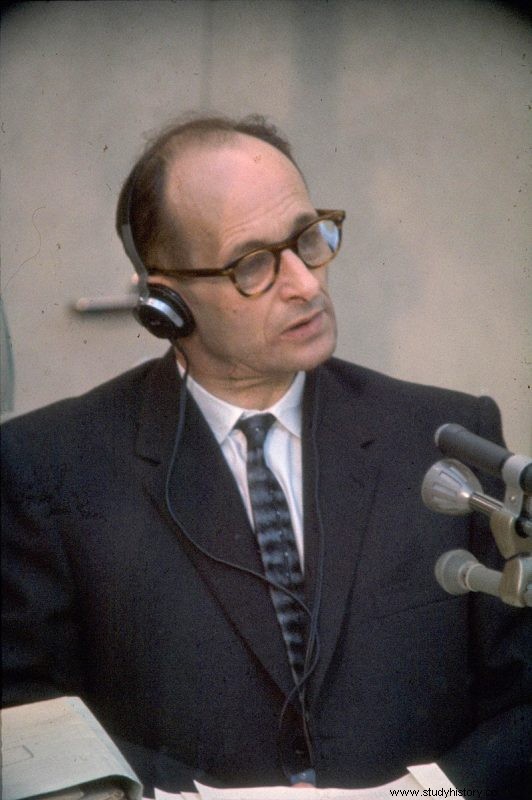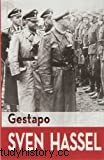April 20, 1944, Hitler's birthday. A day of national celebration. When the upper echelons go astray to make gifts and please the Führer. In the past, there had been reports of new successes against the enemy. That year, however, there was less to offer. The paper flags and the parades were a faint echo of displays from other years.
Operation Valkyrie
The Gestapo's technique of ruthless and indiscriminate terror managed to keep the opposition in check, at least on the surface. But his inability to gain true intelligence was a weakness that had cost him dearly in the past and would do so again.
The army, with its own code of honor, had never had any Gestapo spies. And even so, it was traditionalist soldiers from Altorango who hated the Nazis more and more. Those dissidents were quite capable of outsmarting the Gestapo.
By 1944 it was clear that Nazi Germany was heading for a humiliating defeat. The Gestapo, while unfailingly brutal, was increasingly arbitrary in its denunciations. Failing to detect the level of anger in the army itself, they never imagined that a group of conservative soldiers was ready to act.
On July 20, 1944, Colonel Klaus von Stauffenberg attended a meeting of chiefs of staff organized by Hitler at the Wolf's Lair in East Prussia. He carried his briefcase as usual, but this time it contained a bomb. Fate intervened once again, and Hitler moved the meeting from a concrete bunker to a wooden barracks in the intense summer heat.

Stauffenberg planted the bomb and left. The bomb worked, but it was not powerful enough to kill Hitler due to the new location of the meeting, where the shock wave from the bomb quickly dispersed. Although there were several dead, Hitler only suffered a few scratches. Surviving the bombing reinforced Hitler's belief that he was a superior being sent by providence to lead Germany to victory, thus prolonging the war for another year.
Stauffenberg believed that he had succeeded, so for the next few hours the conspirators tried to seize strategic locations in Germany to take control of the country. However, the plan failed and the Gestapo took their revenge. That same day, the Gestapo arrested the conspirators throughout the country. By night the coup had failed. Stauffenberg was executed in Berlin that same night.
The Gestapo also rounded up all the relatives and friends of all those who thought they were involved. Hundreds of them were sent to concentration camps. Some of the collaborators of the Valkyrie operation came to trial, but only for propaganda reasons. The Gestapo had settled everything out of court for eleven years. The trials were a pantomime where they simply confirmed what the Gestapo had already written in the reports.
The end of the Gestapo
At the end of 1944 an allied bombardment reached the Gestapo headquarters in Berlin, but did not stop his work. Cells of officers regrouped in improvised bases, continuing their work as before. But the allies were closing in. As the decisive day approached, the Gestapo officers began to feel something very familiar to their victims, fear.
In 1945 the time for the Gestapo was almost over. The concentration camps were still full. Some of the prisoners were still alive for show trials that were staged to celebrate the final Nazi victory. They included leading anti-Nazi activists, including Georg Elser, the perpetrator of the 1939 bomb attack. There were also high-ranking military or church leaders. Now that victory was a sad hope, Heinrich Müller took his time issuing an order to the field. On April 9, 1945, Elser and the others were shot, a few days before the Allies liberated Dachau, where they were imprisoned.
As the Red Army tanks closed in, Hitler stepped out of his bunker once more to see what was left of his dreams. He was joined by Müller, although he had no intention of watching the end with his Führer. It was written that he said: I know Russian methods. I have absolutely no intention of being taken prisoner by the Soviets . Müller disappeared in the chaos of the Battle of Berlin.
His boss, Heinrich Himmler, head of the SS and co-founder of the Gestapo, also tried to escape. Some British soldiers caught him. Poor registration allowed Himmler to commit suicide with a cyanide capsule that he had hidden in his mouth.
Hermann Goering, the first leader of the Gestapo was captured and tried in Nuremberg. Although sentenced to death, he managed to escape execution again due to Allied inefficiency. Goering committed suicide with a cyanide capsule that he had managed to sneak into his cell a few hours before his execution.
The rest of the Gestapo officers came under the scrutiny of the victorious allies. Some were brought to justice, but most of them not only were not reprisals, but also held public positions of varying importance in the following decades. Many of the persecutions that were carried out of those responsible for the Gestapo occurred thanks to private individuals. The so-called Nazi hunters They relentlessly persecuted hundreds of Nazi war criminals and former Gestapo agents, achieving some success.
The greatest success of the anti-Nazi forces was the 1960 capture of Eichmann in Argentina. The Israeli Mosad found him and in a covert operation managed to get him out of the country to take him to Jerusalem. There the Israeli authorities tried him and sentenced him to death for organizing the transportation of hundreds of thousands of Jews to the extermination camps. To this day, it remains the only death sentence issued by an Israeli court.

Eichmann however is the exception, not the rule. Perhaps the most surprising thing about the entire history of the Gestapo is that very few of its officers were ever punished for their crimes. Even high-ranking officers, famous for his wanton cruelty, survived denacification, rejoining the regular police force.
Most of the Gestapo officers whose actions had caused the terror, suffering and death of millions of people just removed the swastikas and went on with their careers. Simply by the fact that they had convinced themselves that they were ordinary policemen, trapped in a cycle of madness devised by Hitler. The events of those years simply disappeared from their minds.
As for Müller, whose calculated efficiency had shaped the Gestapo and built his reputation, his fate remains a mystery. His body was not found among the others in the bunker with Hitler. Stories about his fate are varied. One says that he went over to the Russian side in May 1945, continuing as a secret policeman in the service of the Soviet Union in Moscow after the war. Another says that the Americans seized it and reused it for their own secret services, which would be possible, since other SS leaders suffered the same fate. However, none of these rumors have been confirmed. Circumstantial evidence suggests Müller died in the last days of the war. This is however a guess. A grave of Heinrinch Müller once existed, but when investigated, it was found that three people were buried there and none of them was Müller.
rebates The Gestapo:Myth and Reality of Hitler's Secret Police (Critical Memory) McDonough, Frank (Author) 21 €.75
The Gestapo:Myth and Reality of Hitler's Secret Police (Critical Memory) McDonough, Frank (Author) 21 €.75  Gestapo Hassel, Sven (Author) 9.95 EUR
Gestapo Hassel, Sven (Author) 9.95 EUR  Heydrich (20th century history) Gerwarth, Robert (Author) 9.02 EUR
Heydrich (20th century history) Gerwarth, Robert (Author) 9.02 EUR  Operation Anthropoid [DVD] Jamie Dornan, Cillian Murphy, Toby Jones (Actors); Sean Ellis (Director) €14.00
Operation Anthropoid [DVD] Jamie Dornan, Cillian Murphy, Toby Jones (Actors); Sean Ellis (Director) €14.00 In the end, the Gestapo could not have been as effective as it was claimed without the complicity of the people. Their inability to prevent assassinations demonstrated their incompetence as a police force. But he was excellent at encouraging people's baser instincts. It created a climate of terror where pettiness and murder could thrive, where accusations became a way of life, and where thinking differently became a crime.
Last updated on 06-09-2022 / Affiliate Links / Affiliate API Images
